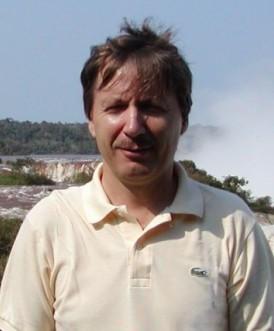Department of Mechanical and Aerospace Engineering Seminar - Biomolecular piezoelectric materials: from amino acids to self-organized peptides
Supporting the below United Nations Sustainable Development Goals:支持以下聯合國可持續發展目標:支持以下联合国可持续发展目标:
Polar supramolecular materials that mimic the structural peculiarities of living organisms have recently emerged because of the need to use their functional properties (such as piezo- and pyroelectricity) in biomedical applications. These applications require not only high piezo- and pyroelectric responses but also full biological compatibility, flexibility, stability, and ability to generate electric charges in contact with biological cells or tissues. One of these materials, diphenylalanine (FF) belongs to the class of self-assembling peptides, which have recently attracted much attention because they can form a variety of structures: nano- and microtubes, nanospheres, nanofibrils, thin films, and hydrogels [1]. FF peptides were shown to possess unique properties such as inherent biocompatibility, high aspect ratio, remarkably rigid structure as well as strong piezoelectricity and pyroelectricity [2, 3]. Another biomolecular material that has been recently found to be strongly piezoelectric and ferroelectric is amino acid glycine [4]. It is found to be relatively stable under ambient conditions and exhibit piezoelectric and non-linear optical properties comparable to those of classical perovskites. Remarkably stable structure, possibility of functionalization together with biocompatibility and facile synthesis and nanofabrication, make amino acids, peptides and other organic materials (e.g. biodegradable poly(3-hydroxybutyrate) [5]) attractive alternatives to traditional oxides such as PZT and BaTiO3. In this presentation, the mechanisms of piezoelectric effect in these materials will be discussed along with the local piezoelectric methods for their study. Hybrid mode of Piezoresponse Force Microscopy mode will be introduced that allows measurements of weak piezosignals during acquisition of force-distance curves [6]. Several types of device prototypes including piezoelectric cantilevers based on peptide microtubes and piezoelectric scaffolds for cardiomyocite cells will be demonstrated. Recent discovery of strong piezoelectricity in FF films [7], microribbons [3], and 2D crystals [8] show that they are very attractive for various applications in biomedicine. Scaling of piezomaterials based on biomolecular ferroelectrics down to a nanosize is expected to dramatically improve their performance, thus making piezoelectric nanodevices suitable for electric energy generation at the biological cell level [9].
[1] K. Tao et al, Science 358, 885 (2017).
[2] A. L. Kholkin et al, ACS Nano 4, 610 (2010); A. Esin et al, Appl. Phys. Lett. 109, 142902 (2016).
[3] S. Sarafyan et al, ACS Appl. Mater. Interfaces 10, 10543 (2018).
[4] S. Guerin et al, Nat Materials 17, 180 (2018); D Vasileva et al, Materials 12, 1223 (2019).
[5] R. Chernozem et al, Nano Energy 89, 106473 (2021).
[6] A. Kalinin et al, Ultramicroscopy 185, 249 (2018).
[7] K. Romanyuk et al, Appl. Mat. Today26, 101261 (2022).
[8] P. Zelenovskiy et al, Adv. Funct. Mater. 31, 2102524 (2021).
[9] P. J. Gouveia et al, Biomaterials 139, 213-228 (2017).

Prof. Andrei Kholkin is an IEEE Fellow, Head of Advanced Microscopy of Functional Materials Lab, at the Department of Physics & CICECO – Aveiro Institute of Materials, Campus Universitario de Santiago, Portugal. He got his MSc and BSc in Physics, St. Petersburg State University, Russia, 1979, and PhD in Solid State Physics, A. F. Ioffe Physico-Technical Institute, Russia, 1987. His research is about ferroelectric films and nanostructures, Sensors and actuators, MEMS, smart systems